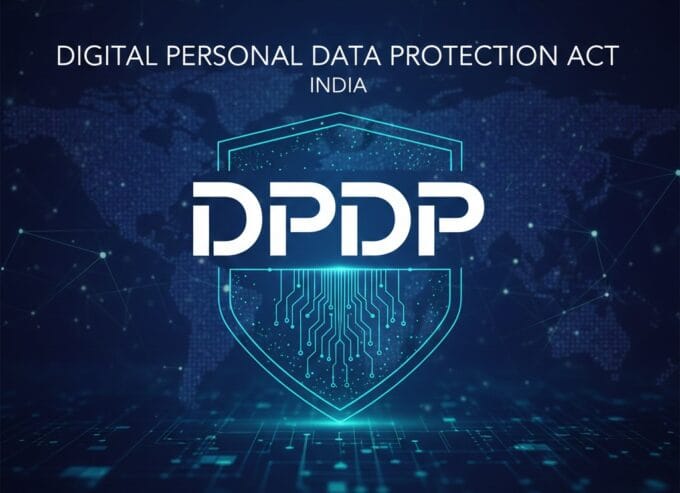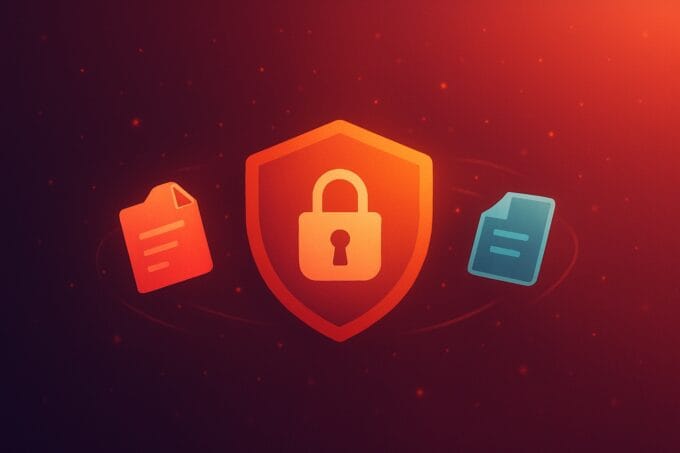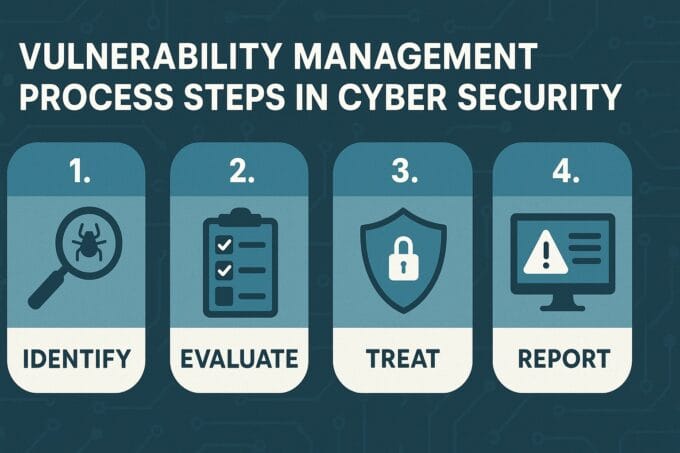Did you know that cyberattacks occur every 39 seconds, affecting one in three Americans each year? That’s a staggering statistic that should make every individual and business owner pause and think! As we navigate through 2025, the cyber threat landscape has become more sophisticated than ever before. From AI-powered attacks to supply chain compromises, cybercriminals are constantly evolving their tactics.
How to Prepare for a Cyber Attack – you don’t have to be a sitting duck. With the right preparation strategies, you can significantly reduce your risk and minimize the impact of potential cyber attacks. I’ve spent years helping organizations build robust cybersecurity defenses, and I’m here to share the most effective preparation techniques that actually work in today’s threat environment. Whether you’re protecting a small business, managing enterprise security, or simply want to safeguard your personal digital life, this comprehensive guide will equip you with actionable strategies to stay ahead of cybercriminals.
Table of Contents
Understanding the Current Cyber Threat Landscape in 2025
The cybersecurity battlefield has transformed dramatically in recent years. Today’s cybercriminals aren’t just script kiddies working from their basements – they’re sophisticated organizations with advanced tools and substantial resources. Understanding what you’re up against is the first step in building effective defenses.
AI-powered attacks have emerged as one of the most concerning developments. Cybercriminals are now using machine learning algorithms to create more convincing phishing emails, generate deepfake videos for social engineering attacks, and automate the discovery of vulnerabilities in target systems. These AI-enhanced threats can adapt in real-time, making traditional security measures less effective.
Supply chain attacks have also skyrocketed, with hackers targeting software vendors and service providers to gain access to multiple organizations simultaneously. The SolarWinds attack highlighted how devastating these can be – one compromised vendor led to breaches at thousands of organizations, including government agencies and Fortune 500 companies. Recent analysis of major cyber attacks in 2024 shows how supply chain compromises have become increasingly sophisticated.
Meanwhile, ransomware continues to evolve beyond simple file encryption. Modern ransomware groups now employ “double extortion” tactics, stealing sensitive data before encrypting systems, then threatening to publish the information if ransom demands aren’t met. Some groups have even added “triple extortion” by targeting customers and partners of their victims.
The statistics are sobering. Cybercrime damages are projected to reach $10.5 trillion annually by 2025, with new organizations falling victim to ransomware every 11 seconds. Healthcare, financial services, and critical infrastructure remain prime targets, but no industry is immune. Understanding which countries are leading the global fight against cyber threats can provide valuable insights – learn more about the top cybersecurity countries in 2025 and their strategic approaches.
Building a Comprehensive Cybersecurity Risk Assessment
You can’t protect what you don’t understand. A thorough risk assessment forms the foundation of any effective cybersecurity strategy. This isn’t a one-and-done activity – it’s an ongoing process that should be updated regularly as your digital footprint evolves.
Start by cataloging all your digital assets. This includes obvious items like computers, servers, and databases, but don’t forget about IoT devices, mobile applications, cloud services, and even social media accounts. Each asset represents a potential entry point for attackers.
Next, identify your crown jewels – the data and systems that would cause the most damage if compromised. This might include customer databases, intellectual property, financial records, or operational control systems. Understanding what matters most helps you allocate security resources effectively.
Vulnerability scanning should be performed regularly using automated tools that can identify known security flaws in your systems. However, don’t rely solely on automated scans. Professional penetration testing provides deeper insights by simulating real-world attack scenarios.
Don’t overlook third-party risks. Your security is only as strong as your weakest vendor. Assess the cybersecurity practices of all partners, suppliers, and service providers who have access to your systems or data. Many successful attacks begin through compromised vendor accounts.
Create a risk register that documents identified vulnerabilities, their potential impact, likelihood of exploitation, and planned remediation efforts. This becomes your roadmap for security improvements and helps justify security investments to leadership.
How to Prepare for a Cyber Attack: Essential Preventive
Prevention is always better than cure, especially in cybersecurity. While you can’t stop every attack, implementing fundamental security controls dramatically reduces your risk and makes you a less attractive target.
Multi-factor authentication (MFA) is your first line of defense. Enable it on every account that supports it, especially for administrative access and cloud services. Even if attackers steal passwords, MFA makes unauthorized access significantly more difficult. Choose app-based authenticators or hardware tokens over SMS when possible – text messages can be intercepted or redirected.
Patch management might seem boring, but it’s critical. Cybercriminals often exploit known vulnerabilities that have available patches. Establish a systematic process for testing and deploying security updates across all systems. Prioritize patches for internet-facing systems and critical infrastructure.
Employee training deserves special attention because humans remain the weakest link in cybersecurity. Regular training should cover phishing recognition, safe browsing practices, password security, and incident reporting procedures. Make training engaging and relevant – use real examples of attacks targeting your industry.
Network segmentation limits damage when breaches occur. Separate your network into zones based on function and trust level. Critical systems should be isolated from general user networks, and guest networks should be completely separate from business systems. Stay informed about the latest cyber attack trends and incidents to understand how attackers are exploiting network vulnerabilities.
Backup strategies are your insurance policy against ransomware and data corruption. Follow the 3-2-1 rule: maintain three copies of important data, store them on two different media types, and keep one copy offline or immutable. Test restore procedures regularly – backups are worthless if you can’t use them when needed.
Email security requires particular attention since email remains the primary attack vector. Deploy anti-phishing solutions, configure SPF/DKIM/DMARC records to prevent spoofing, and train users to verify unusual requests through alternative communication channels.
Developing an Incident Response Plan
When – not if – a cyber attack occurs, having a well-rehearsed incident response plan can mean the difference between a minor disruption and a business-ending catastrophe. Your plan should be detailed enough to guide actions during high-stress situations but flexible enough to adapt to different scenarios.
Establish clear roles and responsibilities for your incident response team. This typically includes an incident commander who makes key decisions, technical specialists who handle containment and investigation, communications personnel who manage internal and external messaging, and legal counsel who ensures compliance with notification requirements.
Define communication protocols that specify when and how to escalate incidents, who needs to be notified at each stage, and what information should be shared. Create templates for common scenarios to speed response time and ensure consistency.
Document step-by-step procedures for common incident types. Your playbook should cover initial detection and analysis, containment strategies, evidence preservation, system recovery, and post-incident activities. Include contact information for key personnel, vendors, and external resources like forensic investigators and legal counsel.
Establish legal and regulatory compliance procedures early in the process. Many jurisdictions require notification of data breaches within specific timeframes. Document what constitutes a reportable incident, who must be notified, and what information must be provided.
Plan for evidence preservation from the outset. Proper forensic procedures are essential for understanding how attacks occurred, what data was compromised, and potentially pursuing legal action against attackers. Train your team on basic evidence handling or establish relationships with qualified forensic investigators.
Test your plan regularly through tabletop exercises and simulated incidents. Start with simple scenarios and gradually increase complexity. After each test, update your procedures based on lessons learned.
Advanced Defense Strategies for 2025
As cyber threats become more sophisticated, defensive strategies must evolve accordingly. Modern cybersecurity requires advanced tools and techniques that can detect and respond to threats in real-time.
Zero trust architecture has become the gold standard for network security. The principle is simple: never trust, always verify. This means authenticating and authorizing every user, device, and application before granting access to resources, regardless of their location or previous access history.
AI and machine learning are transforming cybersecurity defense. These technologies can analyze vast amounts of security data to identify patterns and anomalies that human analysts might miss. Machine learning models can detect new types of malware, identify suspicious user behavior, and automatically respond to certain types of threats.
Endpoint Detection and Response (EDR) solutions provide deep visibility into endpoint activities and can detect sophisticated attacks that traditional antivirus software misses. Modern EDR tools use behavioral analysis to identify malicious activities and can automatically isolate infected systems to prevent lateral movement.
Security Orchestration, Automation, and Response (SOAR) platforms help security teams manage the overwhelming volume of security alerts. These tools can automatically investigate low-risk alerts, escalate high-priority incidents, and coordinate response activities across multiple security tools.
Threat intelligence feeds provide valuable context about current attack campaigns, threat actor techniques, and indicators of compromise. This information helps security teams prioritize their efforts and configure defensive tools more effectively.
Cloud security requires special consideration as more organizations migrate to cloud services. Implement proper identity and access management, configure security groups and firewalls correctly, enable logging and monitoring, and regularly review cloud service configurations for security misconfigurations. For organizations with operational technology, cybersecurity in industrial control systems presents unique challenges that require specialized security approaches.
Recovery and Business Continuity Planning
Even with the best preventive measures, some attacks will succeed. Your ability to recover quickly and maintain critical business operations can determine whether your organization survives a major cyber incident.
Disaster recovery planning should address various attack scenarios, from localized system compromises to organization-wide ransomware infections. Document recovery priorities, required resources, and step-by-step procedures for restoring operations. Include both technical recovery steps and business process continuity measures.
Business continuity plans ensure that essential business functions can continue even when primary systems are unavailable. Identify critical business processes, document manual workarounds where possible, and establish alternative communication and data processing methods.
Data recovery strategies go beyond simple backups. Consider recovery time objectives (how quickly you need to restore systems) and recovery point objectives (how much data loss you can tolerate). Test recovery procedures regularly to ensure they work as expected and can meet your objectives.
Communication planning during recovery is crucial for maintaining stakeholder confidence. Develop templates for communicating with employees, customers, partners, vendors, media, and regulatory authorities. Be transparent about the situation while avoiding speculation about causes or impacts that haven’t been confirmed.
Financial planning should account for the costs of incident response, system recovery, regulatory fines, legal fees, and business interruption. Cyber insurance can help offset these costs, but policies have exclusions and limitations that may not cover all expenses.
Post-incident improvement processes ensure that each incident makes your organization more resilient. Conduct thorough post-mortem reviews to identify what worked well, what could be improved, and what changes are needed to prevent similar incidents in the future.
Cyber Insurance and Legal Considerations
Cyber insurance has become an essential component of comprehensive risk management, but it’s not a substitute for good security practices. Understanding your coverage options and legal obligations helps ensure you’re properly protected when incidents occur.
Cyber insurance policies typically cover first-party costs like incident response, forensic investigation, business interruption, and data restoration, as well as third-party liability for damages to customers or partners. However, policies vary significantly in their coverage, exclusions, and requirements.
Key policy features to evaluate include coverage limits, deductibles, waiting periods, and specific exclusions. Some policies exclude attacks by nation-states, require specific security controls, or limit coverage for certain types of data. Read the fine print carefully and work with experienced insurance brokers who understand cyber risks.
Legal obligations vary by jurisdiction and industry but generally include requirements to protect personal information, notify affected individuals and regulators about data breaches, and maintain reasonable security controls. Violation of these obligations can result in significant fines and legal liability.
Incident reporting procedures often have strict timelines. Many cyber insurance policies require notification within 24-48 hours of discovering an incident, while regulatory requirements may allow more time but still impose specific deadlines for different types of notifications.
Working with law enforcement can be beneficial but isn’t always required. The FBI and other agencies provide valuable resources for incident response and can help with threat intelligence and attribution. However, involving law enforcement may affect your ability to pay ransoms or could result in evidence being seized for criminal investigations.
Documentation requirements for insurance claims and legal proceedings are extensive. Maintain detailed records of security investments, incident response activities, financial impacts, and remediation efforts. This documentation may be crucial for insurance claims, regulatory proceedings, or civil litigation.
Personal Cybersecurity Preparation
Cybersecurity isn’t just a business concern – individuals face significant risks from identity theft, financial fraud, and privacy breaches. Personal cybersecurity preparation follows many of the same principles as enterprise security but focuses on protecting personal assets and information.
Securing personal devices starts with keeping software updated and using reputable security software. Enable automatic updates for operating systems and applications, use built-in device encryption, and configure screen locks with strong passwords or biometric authentication.
Home network security is often overlooked but critically important. Change default passwords on routers and IoT devices, enable WPA3 encryption on wireless networks, disable unnecessary services, and create separate guest networks for visitors and smart home devices.
Password management becomes manageable with dedicated password manager applications. These tools generate unique, complex passwords for each account and sync them across all your devices. Enable two-factor authentication wherever possible for additional protection.
Social media privacy requires regular attention as platforms frequently change their privacy settings and policies. Review and adjust privacy settings periodically, be cautious about what personal information you share, and be skeptical of friend requests or messages from unknown individuals.
Financial account monitoring helps detect fraudulent activity early. Enable account alerts for transactions, regularly review statements, monitor your credit reports, and consider freezing your credit when you’re not actively applying for new accounts.
Family cybersecurity education is essential in households with children or elderly adults who may be more vulnerable to scams. Teach family members about common threats, establish rules for internet use, and create procedures for reporting suspicious activities or potential compromises.
Bottom Line
Preparing for cyber attacks isn’t just about having the latest technology – it’s about creating a comprehensive defense strategy that evolves with the threat landscape. The strategies we’ve covered in this guide provide you with a solid foundation to protect your digital assets and respond effectively when attacks occur.
Remember, cybersecurity is not a one-time setup but an ongoing process. Threats are constantly evolving, and your defenses must evolve too. Start by implementing the basic preventive measures we’ve discussed, then gradually build up your advanced defenses as your understanding and capabilities mature.
The investment in cybersecurity preparation may seem significant, but the cost of recovery from a major cyber attack is almost always much higher. Beyond the immediate financial impact, consider the damage to reputation, customer trust, and employee morale that can result from preventable security incidents.
Don’t wait until after an attack to begin your preparation – the time to act is now! Take the first step today by conducting a basic risk assessment of your current security posture. Identify your most critical assets, evaluate your current protections, and prioritize improvements based on risk and available resources.
Your future self will thank you for the proactive measures you implement today. Stay vigilant, stay prepared, and remember – in cybersecurity, preparation is your best defense against an increasingly dangerous digital world.

















Leave a comment